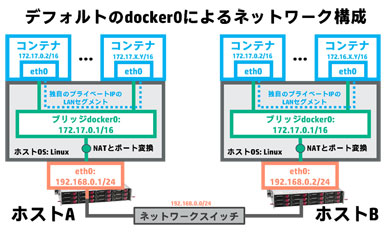


#Docker ip driver#

$curl Explanation: In the above snapshot, we can see that the nginx server is easily accessible locally on port 80 without exposing any port from the host to the container. Step 2: Let’s try to access nginx on port 80 from the localhost. $docker run -d -network host -name my_nginx nginx:alpineĮxplanation: In the above example, we have created a container ‘my_nginx’ and attached the host network. Step 1: First thing first, let’s create a container using the Docker image named ‘nginx:alpine’ as shown below: Scenario: Create an nginx container and try to access it externally without exposing the port. $docker network create host2 -driver=hostĮxplanation: In the above example, we have tried to create a host network named ‘host2’ however, it did not work as we can only create one host network locally. Let’s try to create a new host network using the below command and see what happens. We have to use the below command to connect the host network to a container while running: –Įxplanation: In the above example, we have created a container named ‘my_con’ with the ‘nginx:alpine’ Docker image and used the host network. To list the host network in Docker, we can use the below command: –Įxplanation: In the above snapshot, we can see that we have a host network named ‘host’. Let’s understand it with a few examples: – Example #1 We can use this network mode for a swarm service as well however, it includes some extra limitations for example, if we bind a service container to port 80, then Docker daemon only runs one service container on a given swarm mode.
#Docker ip windows#
This driver only works on Linux hosts, and it is not supported on Docker Desktop for Mac, Docker Desktop for Windows, or Docker EE for Windows Server. Host network mode is used to optimize performance as it does not require network address translation. As we know now, the container does not get any IP address assigned when using the host network driver that means if we bind to port 80 to a running container and the container is using the host network, then the application running inside the container is available on port 80 on the host’s IP address, it also means we cannot bind the same port to two different containers. We have to use the ‘–network’ option and specify ‘host’ as an argument to use the host network driver while running a container. $docker run -d -network host -name my_con nginx:alpine
#Docker ip software#
Web development, programming languages, Software testing & others
#Docker ip free#
Sorry for being not able to guide you through in detail, but hopefully these hints will help you.Start Your Free Software Development Course So in case, you may just need a container to be reachable for other systems and you can’t change the ip address, I would think of a little proxy, apache, nginx, etc to do the redirection for you. Then you may create a subnet with the desired ip addresses and so and so forth. The main idea is: You create a virtual network over your LAN with the docker commands network … It wouldn’t make much sense to tell you in brief, what needs to be done, as this may throw up much more questions than answers. So, please have a read about these features HERE! Actually, the doing is no rocket-science, but you have to understand these features first, before you can make use of it. This is not a five minutes task to solve. The error message tells you, that you are not using the networking features of Docker, yet. Well, the issue becomes more complex the longer we discuss it. Sorry for being not a FTE of Docker support


 0 kommentar(er)
0 kommentar(er)
